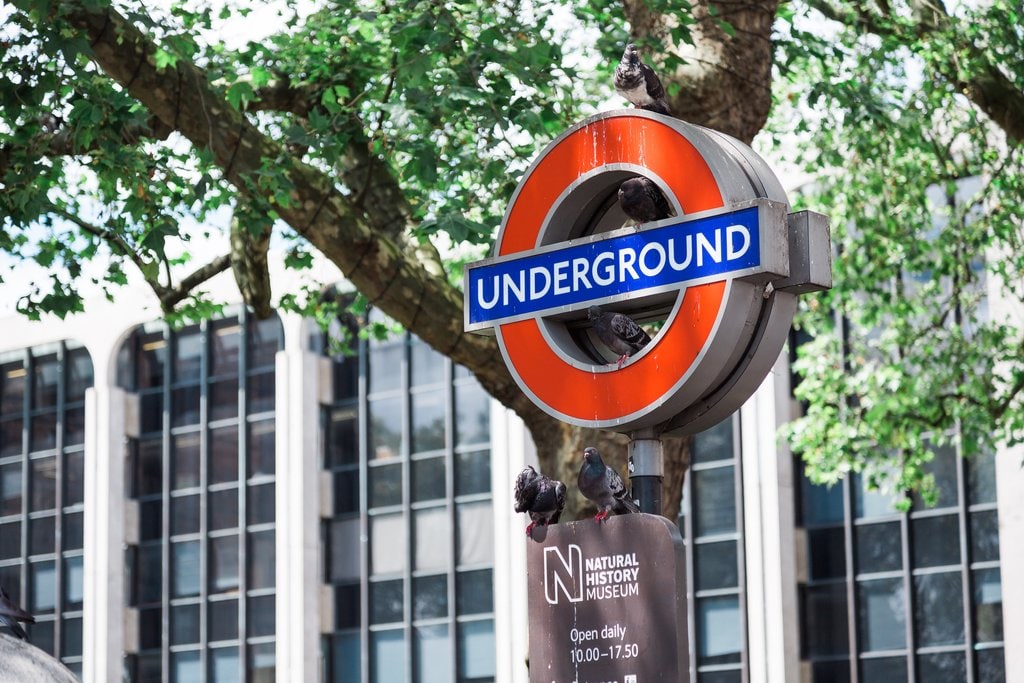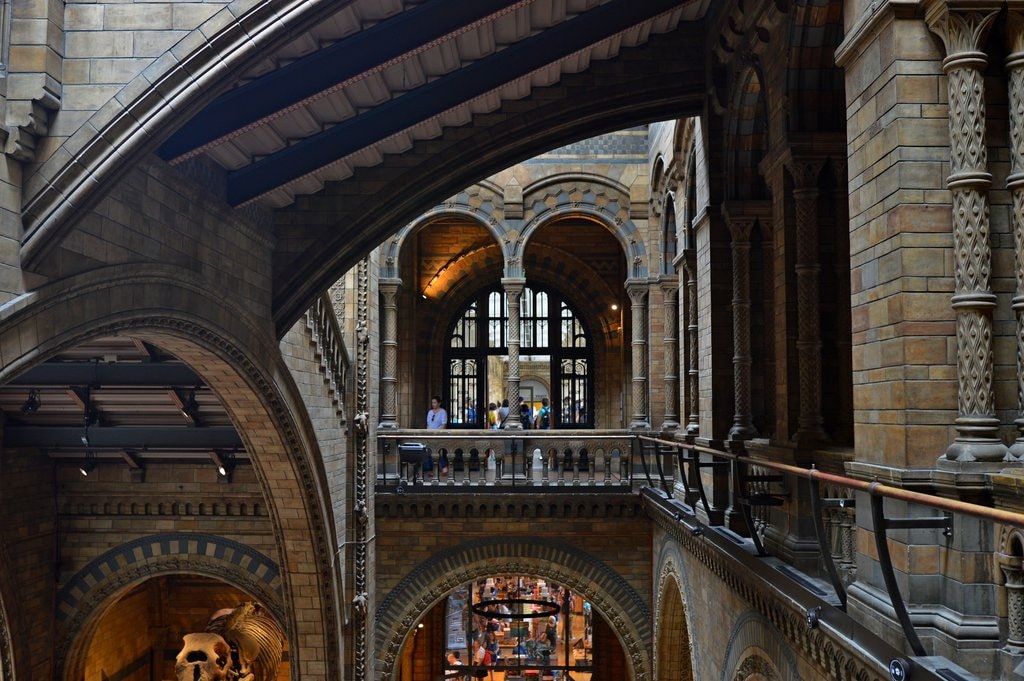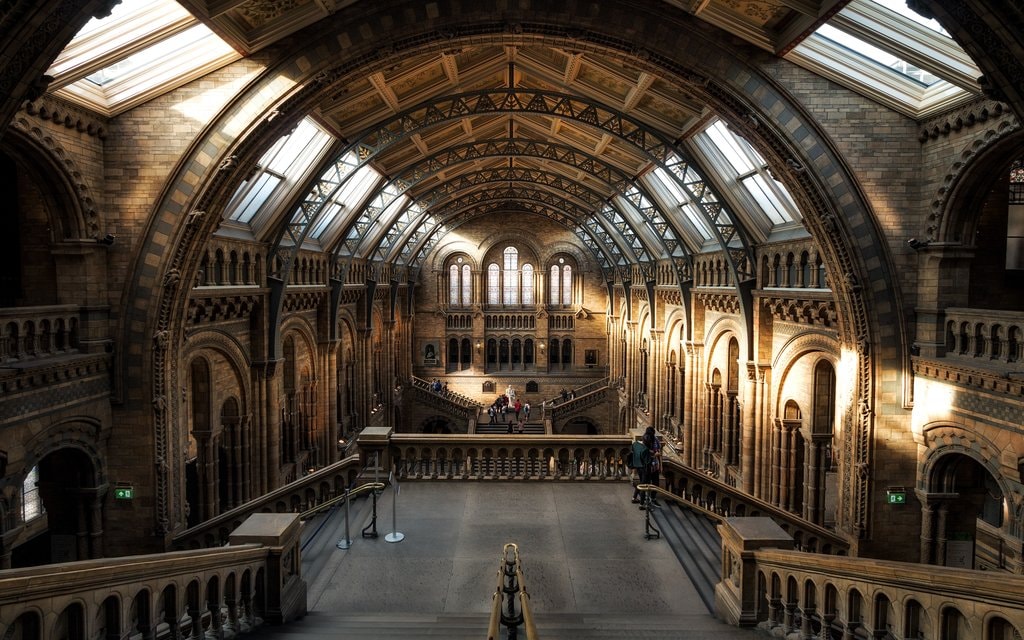What to Know Before You Visit London’s Natural History Museum
“London’s Natural History Museum is filled with fascinating artefacts and exhibits, such as a dodo skeleton and a chunk of moon rock, and boasts one of the largest collections of natural history in the world. The popular museum attracts over 5 million visitors each year and is considered one of the city’s most important museums.
Here are some useful tips and information to help you plan your trip and get the most out of the experience.

About the Natural History Museum
——————————–
The Natural History Museum has a collection of 70 million artefacts divided into categories of Mineralogy, Entomology, Zoology, Palaeontology and Botany. The museum is open to tour every day of the week except for Christmas Eve, Christmas Day and Boxing Day, from 10 a.m. to 5:50 p.m.
The museum is on Exhibition Road near the Victoria & Albert Museum and the Science Museum, and the main entrance is on Crowell Road. The area is serviced by the London Underground Station at South Kensington on the District, Circle and Piccadilly lines. The nearest train station is the West Brompton station. You can also reach the museum via bus routes 14, 49, 70, 74, 345, 360, 414, 430 and C1.
In addition to the spectacular collection of artefacts the museum holds, it’s also free to visit. Numerous special events are available as well, which range from interactive installations to new discoveries in the field of natural science.

Natural History Museum highlights
———————————
The Natural History Museum has colour-coded zones with different topics. The Green Zone is focused on birds, insects, fossils and minerals, the Red Zone is focused on the planets and the universe, and the Blue Zone is focused on dinosaurs, mammals, reptiles, amphibians and marine invertebrates. The Orange Zone has the Wildlife Garden, a seasonal exhibit that’s open between April and October.Some of the must-see exhibits in the museum include:
– The first tyrannosaurus skeleton ever found
– A diplodocus skeleton
– An archaeopteryx fossil
– The Wold Cottage meteorite, which is 4.5 billion years old
– The 1st edition of the On the Origin of Species
– The largest gold nugget in the world
– Coloured diamonds in the Aurora Collection
– An earthquake simulator
– A 14,700-year-old cup constructed from a human skull

Best time to visit
——————
The Natural History Museum is a popular place for families with children, so it tends to be busiest during school holidays and weekends. It’s also busiest in the dinosaur exhibits, which tend to be a favourite among children. To avoid the crowds, it’s best to visit during the week, early in the morning or later in the evening.
There can be long queues at the entrance during busy times. The Cromwell Road entrance is the most crowded, and you’ll likely have a shorter wait at the Queen’s Gate or Exhibition Road entrances. The Exhibition Road entrance is pushchair friendly, and pushchairs can be stored for free in the cloakrooms.
Where to eat
————
The museum has many restaurants and cafes for refreshments during your visit. If you prefer to bring your own food, seating areas are around the outside of the museum, where you can have a picnic overlooking the exhibits in the halls.

Plan your trip
————–
The Natural History Museum is so big that you won’t be able to see it all in one day. If you’re only able to visit once, make note of the zones or exhibits that matter most to you and check the map to make the most of your time. You can download suggested trails through the museum as well, so you’ll be sure to see everything you want to see.
If possible, try to split your visit into over multiple days to experience all the museum has to offer.
Nearby attractions
——————
Hyde Park and Kensington Gardens are just a short walk from the museum, and a visit to either place is a great way to let the kids blow off steam and stretch their legs a little. Some highlights of the park include the Diana, Princess of Wales Memorial Fountain, Serpentine Lake, the Albert Memorial and the Serpentine Sackler Gallery in Kensington Gardens. The kids will like the Diana Playground, which is a themed playground based on the story of Peter Pan.
If you’re planning a trip to London, be sure to check out the Natural History Museum and see all the wonders of the world on display. Expedia has great deals on London hotels to ensure you make the most of your trip!”
More Articles With City break
Finding wheelchair-accessible things to do in London can often be a tricky task, but a new app makes it a lot easier.
Ready for your next great holiday? To help you prepare, we’ve created a simple travel checklist to make sure you’ve covered the essentials.
We rounded up 18 locals-only secrets in some of the world’s most beloved cities to help you feel like an insider, no matter where your travels take you.
Top travel tips from Jake Graf: a couples guide to London
The ultimate whatever-the-weather London staycation guide